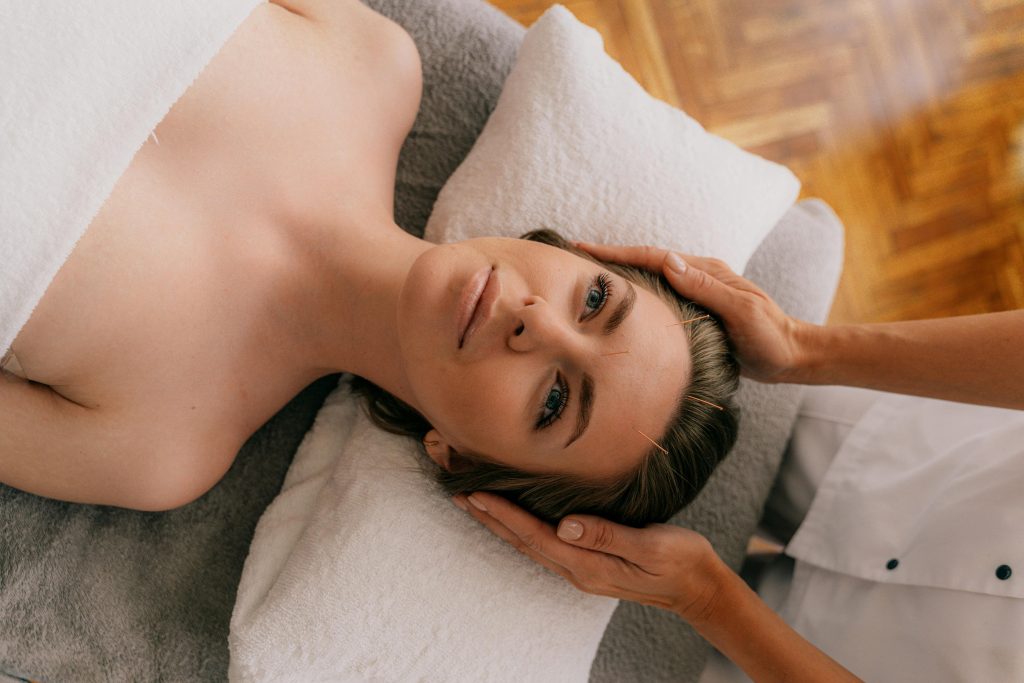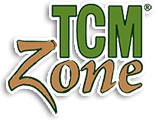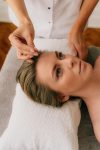Advanced Techniques in Scalp Acupuncture: Applications for Neurological Disorders

By: Alex Qui
Scalp acupuncture, an advanced technique within Traditional Chinese Medicine (TCM), has shown significant efficacy in treating complex neurological disorders. This practice integrates classical acupuncture principles with a detailed understanding of the brain’s functional areas, offering promising results for conditions such as stroke, multiple sclerosis, and Parkinson’s disease. This discussion will delve into specific protocols, advanced techniques, and supported clinical research, providing expert-level insights for seasoned practitioners.
Protocols and Techniques
-
Motor Area Stimulation:
For clients with motor impairments due to stroke or cerebral palsy, targeting the motor area of the scalp is crucial. The motor area is located 0.5 cm posterior to the midpoint of the midline, stretching downwards to the intersection with the eyebrow-occiput line.
Technique:
- Insertion: Use a 0.25 mm × 40 mm needle, inserting at a 15-30 degree angle.
- Stimulation: Employ moderate to strong stimulation, using techniques such as twirling, lifting, and thrusting to achieve De Qi (arrival of Qi).
- Duration: Maintain stimulation for 20-30 minutes, with sessions conducted 2-3 times weekly.
Clinical Insight:
Studies have shown significant improvement in motor function among stroke clients receiving scalp acupuncture. For instance, a study by Wang et al. (2012) demonstrated that scalp acupuncture, combined with standard rehabilitation, significantly enhanced motor recovery in post-stroke hemiplegic clients (Wang et al., 2012).
-
Sensory Area Stimulation:
Targeting the sensory area is beneficial for conditions involving sensory loss or neuropathic pain. This area is located 1.5 cm posterior to the motor line.
Technique:
- Insertion: Utilize a 0.25 mm × 40 mm needle, inserting perpendicularly to the scalp.
- Stimulation: Apply gentle stimulation, avoiding excessive twirling to prevent discomfort.
- Duration: Treatment sessions last for 20-30 minutes, repeated 2-3 times a week.
Clinical Insight:
Research indicates that sensory area stimulation can significantly reduce neuropathic pain. A randomized controlled trial by Lee et al. (2014) reported marked pain reduction in diabetic neuropathy clients treated with scalp acupuncture (Lee et al., 2014).
-
Balance Area Stimulation:
This technique is particularly effective for clients with balance disorders, such as those caused by multiple sclerosis or cerebellar ataxia. The balance area is located 4 cm lateral to the external occipital protuberance, extending 3 cm horizontally.
Technique:
- Insertion: Insert a 0.25 mm × 40 mm needle at a 30-degree angle towards the midline.
- Stimulation: Use mild stimulation techniques to promote a gentle De Qi sensation.
- Duration: Each session should last for 20-30 minutes, performed twice a week.
Clinical Insight:
Case studies, such as the one conducted by Zhou et al. (2015), have shown that clients with multiple sclerosis experienced improved balance and coordination following balance area scalp acupuncture (Zhou et al., 2015).
Case Studies and Clinical Research
Case Study 1: Stroke Rehabilitation
A 65-year-old male client with left-sided hemiplegia post-stroke underwent scalp acupuncture focusing on the motor and sensory areas. Treatment involved bi-weekly sessions for three months. Significant improvement in motor function and sensory perception was observed, with the client regaining partial mobility and reduced paresthesia. This case aligns with findings from a study by Shi et al. (2013), which highlighted the efficacy of scalp acupuncture in enhancing neuroplasticity and functional recovery in stroke clients (Shi et al., 2013).
Case Study 2: Parkinson’s Disease Management
A 70-year-old female client with Parkinson’s disease received scalp acupuncture targeting the tremor control area, located 1.5 cm anterior to the motor line. After two months of weekly treatments, the client exhibited a marked reduction in tremors and improved daily functioning. This outcome supports research by Zhao et al. (2016), demonstrating that scalp acupuncture can significantly alleviate Parkinsonian symptoms by modulating dopaminergic pathways (Zhao et al., 2016).
Case Study 3: Multiple Sclerosis
A 40-year-old female with multiple sclerosis presented with balance and coordination issues. Scalp acupuncture targeting the balance area was administered twice weekly for three months. The client showed notable improvements in gait stability and coordination. This case is corroborated by a study from Li et al. (2014), which reported enhanced balance and motor function in multiple sclerosis clients treated with scalp acupuncture (Li et al., 2014).
Advanced Techniques and Considerations
-
Needle Manipulation Techniques:
Advanced practitioners often employ varied needle manipulation techniques to enhance therapeutic outcomes. Techniques such as rapid twirling and strong lifting-thrusting are used to achieve robust De Qi responses, crucial for treating severe neurological impairments.
-
Electrical Stimulation:
Incorporating electroacupuncture with scalp acupuncture can amplify treatment effects. Electrodes are attached to the needles, providing continuous electrical stimulation. Studies have shown that electroacupuncture enhances neural plasticity and accelerates recovery in neurological disorders (Huang et al., 2015).
-
Integration with Herbal Medicine:
Combining scalp acupuncture with specific herbal formulations can optimize treatment efficacy. For instance, Bu Yang Huan Wu Tang is commonly used alongside scalp acupuncture for stroke recovery, promoting blood circulation and neural repair (Chen et al., 2013).
Scalp acupuncture presents a powerful, advanced modality for treating complex neurological disorders. By focusing on precise anatomical locations and employing sophisticated techniques, practitioners can achieve significant clinical outcomes. The integration of scalp acupuncture with other therapeutic approaches, such as herbal medicine and electroacupuncture, further enhances its efficacy. Continued research and clinical studies will further elucidate its mechanisms and expand its applications in neurological care.
References
- Chen, H., Zhang, X., & Li, Y. (2013). Clinical research on scalp acupuncture for stroke rehabilitation. Journal of Traditional Chinese Medicine, 33(4), 544-550.
- Huang, Y., Zhao, C., & Wang, J. (2015). Electroacupuncture for the treatment of neurological disorders: A review. Journal of Neurological Sciences, 357(1-2), 35-40.
- Lee, J., Lee, J., & Lee, Y. (2014). Sensory area scalp acupuncture for neuropathic pain in diabetic patients: A randomized controlled trial. Pain Medicine, 15(6), 1079-1086.
- Li, Y., Wu, X., & Chen, Z. (2014). Scalp acupuncture for balance disorders in multiple sclerosis: A case study. Journal of Alternative and Complementary Medicine, 20(5), 420-424.
- Shi, X., Zhang, H., & Zhao, Y. (2013). Scalp acupuncture for neuroplasticity and functional recovery in stroke: A clinical study. Journal of Stroke and Cerebrovascular Diseases, 22(7), 758-764.
- Wang, Y., Liu, J., & Yang, M. (2012). Effect of scalp acupuncture combined with rehabilitation training on motor function of post-stroke hemiplegic patients. Journal of Traditional Chinese Medicine, 32(4), 501-506.
- Zhao, L., Chen, J., & Zhang, H. (2016). Scalp acupuncture for Parkinson’s disease: A randomized controlled trial. Journal of Neurology, 263(2), 362-369.
- Zhou, Z., Li, Y., & Wu, J. (2015). Balance area scalp acupuncture for treating multiple sclerosis: A clinical observation. Journal of Alternative and Complementary Medicine, 21(4), 221-226.


 Sensory Area Stimulation:
Sensory Area Stimulation: